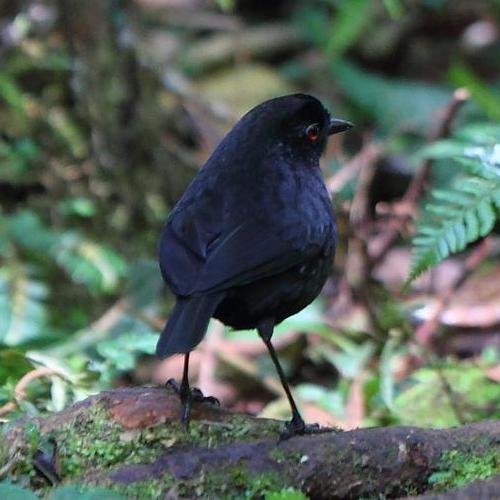Melampittidae – Melampittas

This newly delineated familly has just two species:
Lesser Melampitta Melampitta lugubris
Greater Melampitta Megalampitta gigantea
Formerly classified as a bird-of-paradise, the little-known Greater Melampitta has an uncertain taxonomy and is sometimes believed to be affiliated to pitohuis, as it appears to be poisonous to eat (Frith and Beehler 1998). It is found in New Guinea. Its natural habitats are subtropical or tropical moist lowland forests and subtropical or tropical moist montane forests.
The Lesser Melampitta is a medium-sized enigmatic terrestrial songbird of mountain forests of New Guinea. It is now classified (with the greater melampitta) in the family Melampittidae, but in some other sources it is variously considered close to or in the Orthonychidae (logrunners), Paradisaeidae (birds of paradise), Corcoracidae (Australian mud-nesters), Cnemophilidae (satinbirds) or Monarchidae (monarch flycatchers). It is approximately 18 cm long and has an all-black plumage with long legs and short tail. Both sexes are almost similar, distinguished by the color of the iris. The male has crimson red iris while the female’s are dark brown. The lesser melampitta builds dome-like nest in the forests. The diet consists mainly of insects. Widespread and a common species throughout its habitat range, the lesser melampitta is evaluated as least concern on the IUCN Red List of Threatened Species.
